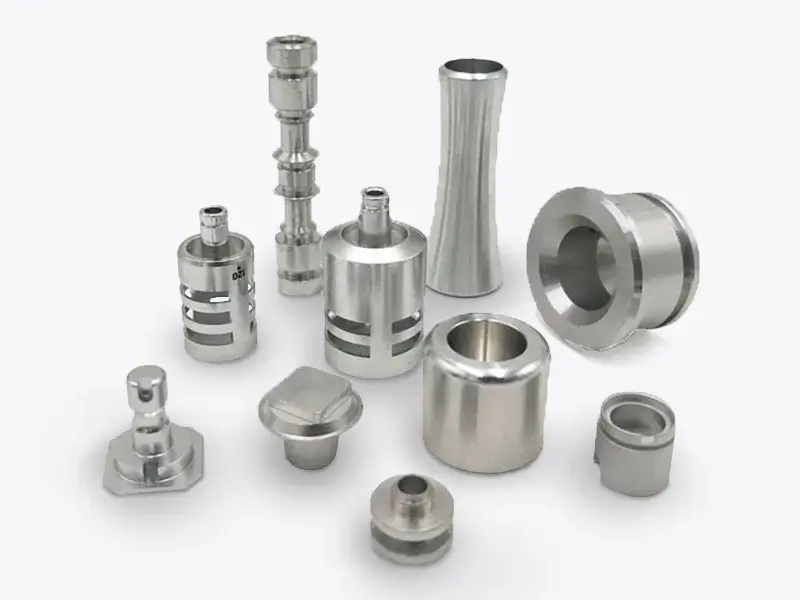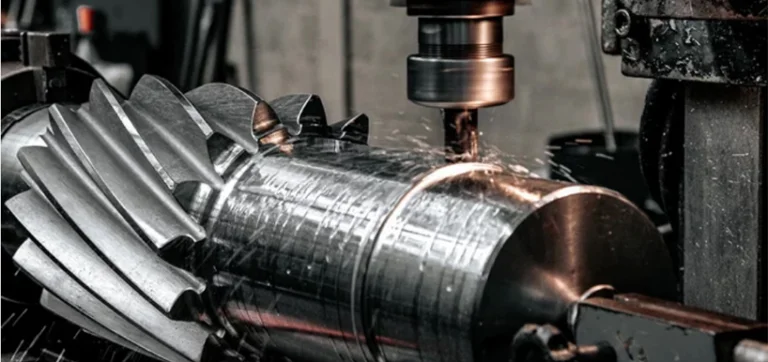CNC Turning Service


Jiangzhi offers custom CNC turning services for both prototypes and high-volume production. Our advanced machinery ensures precise, high-quality results for complex cylindrical parts. With competitive pricing starting at just $50 per part, we deliver cost-effective CNC machining solutions tailored to your specific needs. Plus, our expert team works with a variety of materials to bring your design to life with accuracy and efficiency.

What is CNC Turning?
CNC Turning Capabilities
Maximum Capabilities for CNC Turning
| Part size limitations | Metric units | Imperial units |
|---|---|---|
| Maximum part diameter | 431mm | 17in |
| Maximum part length | 990mm | 39in |
| Maximum swing over the carriage | 350mm | 13.7in |
| Maximum spindle through-hole | 40mm | 1.5in |
CNC Turning General Tolerances
| Description | General Tolerance |
|---|---|
| Distance Dimensions | For features of size (Length, width, height, diameter) and location (position, concentricity, symmetry) +/- 0.1mm. |
| Orientation and Form Dimensions | ±0.1~2mm depend on part size, Angularity 1/2 degree. |
| Edge Condition | Sharp edges will be broken and deburred by default. Critical edges that must be left sharp should be noted and specified on a print. |
How CNC Milling Works?
The components of a CNC lathe include the workpiece, sleeve, spindle, cutting tool and tool holder, live machining, and tool tower, all working together to precisely shape raw material into finished parts.
Step 1: Workpiece Setup
The raw material is securely clamped on the CNC milling table, and the cutting tools are installed in the tool holder and tool tower, ready for precise machining.
Step 2: Programming & Toolpath
The CNC machine is programmed using the part’s CAD design, defining toolpaths, spindle speed, and feed rate for accurate material removal.
Step 3: Milling & Material Removal
The cutting tool rotates and moves along multiple axes to remove material, shaping features such as pockets, slots, contours, and threads with high precision.
Step 4: Finishing
Parts can be left as-machined or undergo deburring, bead blasting, or other surface treatments to achieve the desired finish.
Step 5: Inspection & Delivery
Finished parts are checked for dimensional accuracy and surface quality, then packed and shipped efficiently.
Top 10 CNC Machining Benefits
Why Choose Us?
Ensuring accurate and intricate part production
Meeting diverse industry needs
Proven track record in successful projects
Rigorous quality checks for reliable results
Professional CNC Turning Service Company
FAQs of CNC Milling
What are the limitations of CNC turning?
CNC turning has some limitations like design restrictions. CNC turning is ideal for creating rotational, symmetric parts. But other methods such as CNC milling might be more appropriate for non-cylindrical parts.
What is the basic principle of CNC turning process?
As the piece rotates, a cutting tool is fed to the piece, which works at the material, cutting away to create the desired shape. Unlike other cutting sytles where the cutting tools themselves move and spin, in this case, the workpiece is rotated during the cutting process.
What materials are used in CNC turning?
The most common CNC turning materials include: aluminium, stainless steel, copper, brass, steel alloy, and various plastics.
How many types of CNC turning are there?
There are two broad categories of CNC turning centers, which include horizontal turning centers and vertical turning centers. Horizontal turning centers are far more common than their vertical counterparts.




